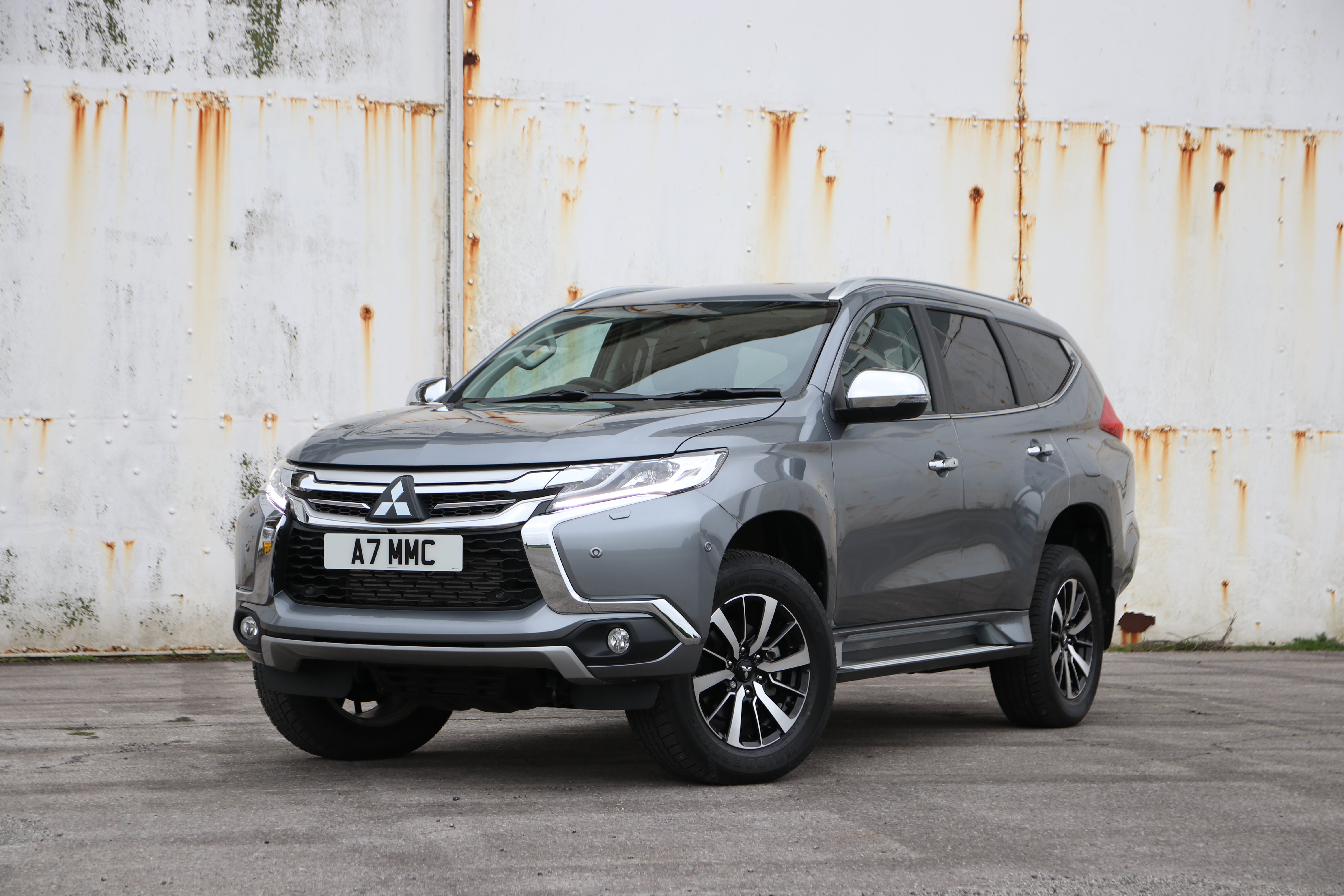Mitsubishi Shogun Sport (2018-2021) Review
Written by Andrew Brady
Quick overview
Pros
- Excellent off road
- Lots of off-roading equipment as standard
- Good space for seven adults
Cons
- Boot space is limited
- Poor on-road driving ability
- Expensive to buy and run
Overall verdict on the Mitsubishi Shogun Sport
"In this Mitsubishi Shogun Sport review we are looking at a seven-seat SUV, but one that is quite unlike pretty much all of its rivals on account of its superb off-road ability - at the cost of decent on-road manners. Tough, versatile and spacious, it will tick many boxes for some buyers, but most will be better off with something more car-like if seven seats and comfort are key requirements."
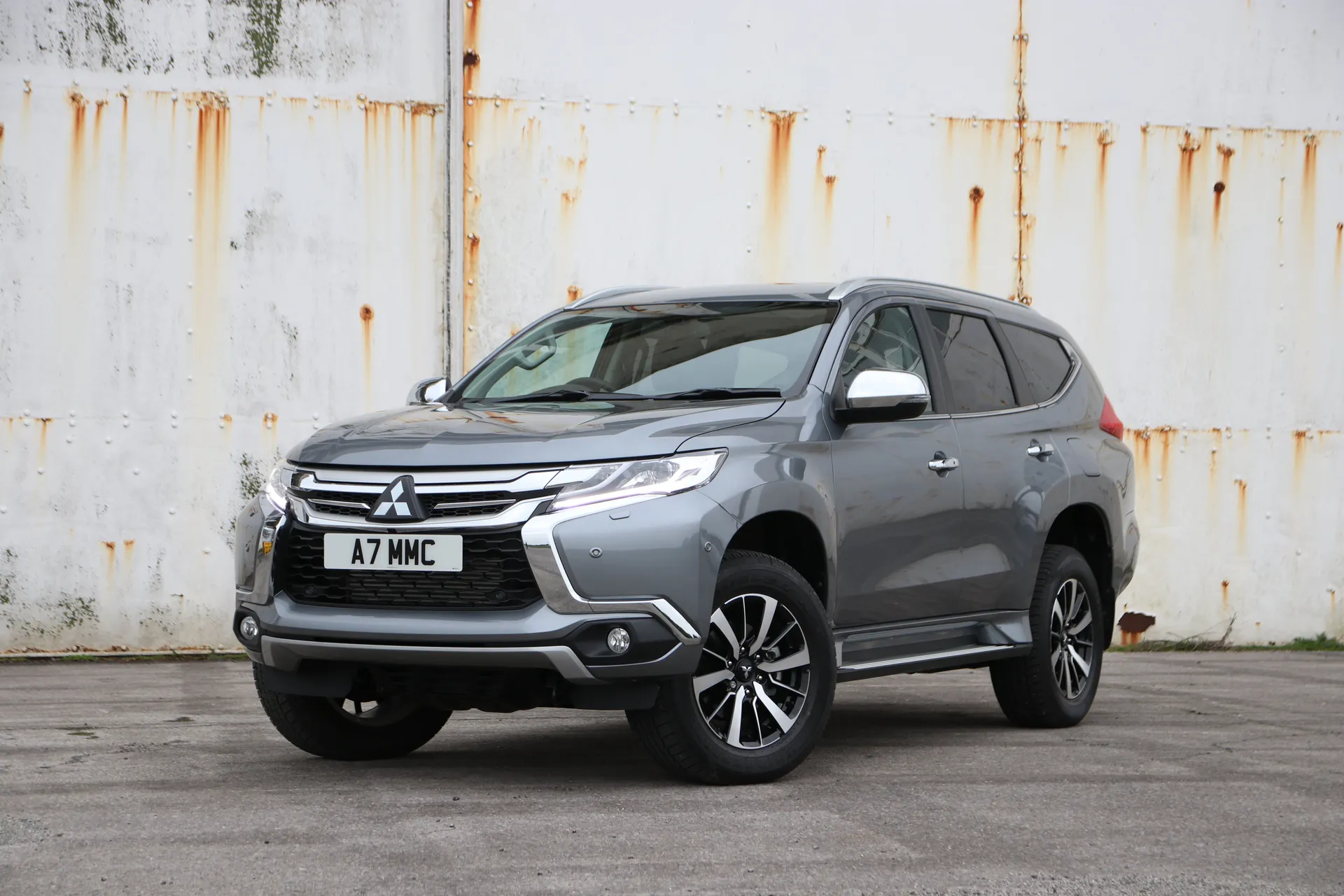
One oddity of the Mitsubishi Shogun Sport is that it is based on the same underpinnings as the Mitsubishi L200 pick-up truck. While lots of commercial vehicles are boasting about how car-like they are, this is a car that’s based on a commercial vehicle.
This means that you can be pretty confident with the Mitsubishi Shogun Sport’s off-roading ability. This is not only because of how it’s built but because of the various technology and systems it comes with.
These are all packaged up under the grand sounding Super Select II 4WD system. This includes a hill descent control, an off-road mode and trailer stability assist. You also get a locking rear differential.
The trade-off for the off-road ability is a less impressive on-road persona. It doesn’t have the same rugged suspension as the Mitsubishi L200 pick-up – it has a more sophisticated multi-link setup at the rear – but it is still less composed than more road-friendly rivals. There is a fair amount of body roll, for example, and it has a bumpy ride. The softness of the suspension also means that it has a tendency to pitch forward and backward under hard acceleration or braking.
The Mitsubishi Shogun Sport comes with seven seats as standard, and the third row of seats come with a decent amount of space, although shorter adults will still be the ones who end up being volunteered to sit there. There is not much in the way of boot space with all the seats in place, but the Mitsubishi Shogun Sport’s sheer size means that the boot offers a good amount of room when the third row of seats are dropped.
There isn’t much choosing to do when it comes to picking your Mitsubishi Shogun Sport – there is just the one engine and two trim levels. Oddly the entry-level model is called the ‘3’ while the other version is, unsurprisingly, the ‘4’. The standard model gets leather upholstery, electrically adjustable front seats, LED headlights and rear parking sensors. The 4 adds a 360-degree camera, blind spot warning, adaptive cruise control and heated seats among other kit.
That single engine is a 2.4-litre diesel with 181PS and a peak torque of 430Nm. This is another element that the Mitsubishi Shogun Sport has in common with the Mitsubishi L200. While this engine was a decent fit to the L200 when it was introduced in 2015, your average SUV driver demands a little more in the way of refinement and quietness. Although you may not buy an SUV for its raw pace, the 0-62mph time is slightly pedestrian versus rivals, taking 11.0 seconds.
Fuel economy lags behind rivals, too, with an official figure of just over 32mpg and a CO2 emissions rating of 227g/km, which means that company car drivers might be wincing when it comes to calculating their benefit-in-kind contributions.
The Mitsubishi Shogun Sport has some really strong attributes in its favour, but many of those relate to its off-road ability and rivals offer a much more compelling prospect if you value on-road manners.
If you're looking for the different version, you can check out our Mitsubishi Shogun (2007-2019) review, while we also have a large range of Mitsubishi Shogun Sport cars for sale.
Is the Mitsubishi Shogun Sport right for you?
The Mitsubishi Shogun Sport is something of a rarity these days – an SUV that is more geared towards off-road work than cruising around town or up and down the motorway.
While that might be a downside to some, it will be a real boost to others as you don’t have to upgrade to an expensive higher trim to get all-wheel drive and the off-road technology that helps you conquer tricky terrain. It’s also got the added bonus of seven seats as standard, which means you can get more people out to the furthest field, or whichever hard-to-get-to spot you need to access – in one go.
If you are after an old-school workhorse, and don’t want to worry about roughing up something that comes with vast amounts of expensive interior decoration, then this could be just the thing.
What other cars are similar to the Mitsubishi Shogun Sport?
In terms of off-road ability and attitude, the Mitsubishi Shogun Sport’s natural allies are the pick-up trucks of this world. Mitsubishi’s own L200, the Nissan Navara and the Volkswagen Amarok are the pick of the bunch on that front.
The more conventional direct equivalents – the non-premium seven-seat SUVs – are the likes of the Hyundai Santa Fe, Nissan X-Trail and the Skoda Kodiaq. The Ssangyong Rexton is the other value-focused model worth considering.
Comfort and design: Mitsubishi Shogun Sport interior
"The Mitsubishi Shogun Sport’s driving position is aided by the car’s high ride height, while the cabin itself will be familiar to those who have been in a Mitsubishi L200 in recent years."
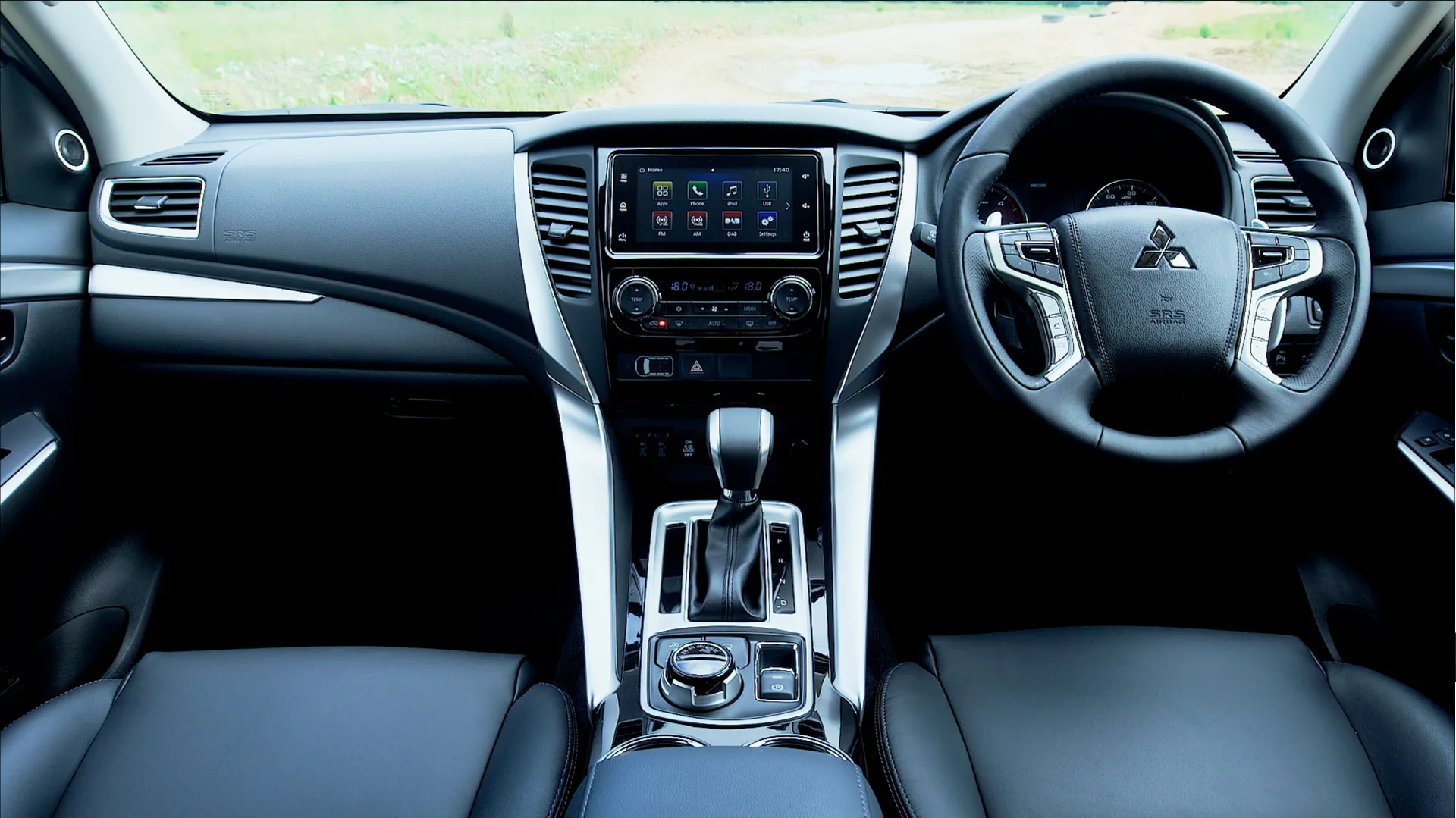
The SUV comes with a little more kit than the pick-up, though, and the seat comes with electric adjustment on every model, which allows you to tweak the position to minute details. The steering wheel could do with a little more scope for adjustment, but it should be possible for most drivers to get comfy.
The seats themselves are soft and comfortable, but they don’t have as much side support as they could, so you might find yourself being thrown around a little more if you take a corner with a bit too much enthusiasm.
The dashboard isn’t as daring in its looks as the outside of the Mitsubishi Shogun Sport. It is a relatively simple layout, with big buttons that are easy to prod on the move. The temperature buttons are kept separate from the touchscreen that is standard on every model, while the off-roading functions are set lower down still on the central console, so it’s nigh-on impossible to hit the wrong button by mistake.
The gear lever for the automatic transmission is large and takes up a fair amount of room in the central area of the cabin, but the use of an electronic parking brake means some space is stolen back.
Quality and finish
Some of the materials in the Mitsubishi Shogun Sport feel quite nice, with the standard leather seats a pleasing touch. They are a bit of an anomaly, though, with many of the other materials feeling cheap and hard to the touch. There isn’t much in the way of soft-touch material throughout, and plenty of scratchy black and silver plastic, with the latter meant to give a metallic look.
The buttons and dials also feel fairly low rent, and they don’t have the solidity that you would expect in a car that cost close to £40,000.
There is no difference between the two trims in terms of appearance, so you get the same layout for both, just with more features.
The bonus of those hard materials is that they should be relatively hard wearing. Smooth shiny plastics will be easier to wipe down than plush surfaces.
Infotainment: Touchscreen, USB, nav and stereo in the Mitsubishi Shogun Sport
The Mitsubishi Shogun Sport comes with a seven-inch touchscreen as standard, and it comes with a decent selection of features. As well as the usual Bluetooth and USB connections it also has an HDMI input. You can also use voice control to control some of the more basic functions.
The screen might be the same on both models, but the higher spec does get an upgraded eight-speaker system and an improved amplifier – the standard model gets six speakers.
Despite the features, the Mitsubishi system isn’t the sharpest out there. It is a little slow to react and is not the newest on the market. Thankfully you can bypass all the main systems as the Mitsubishi Shogun Sport comes with Apple CarPlay and Android Auto as standard.
You’ll be grateful for this if you want any form of satellite navigation, as there isn’t any in-house system on offer, either on the top trim or the options list.
Space and practicality: Mitsubishi Shogun Sport boot space
There is a good amount of passenger space all through the Mitsubishi Shogun Sport’s cabin, which is thanks in part to the fact that this is a comparatively large car. The front seats get a decent amount of head and leg room, although the big central console might be a bit restrictive for some.
The middle seats offer plenty of head, leg and shoulder room, too. The floor for the middle seat is only slightly raised so there is no major restriction on getting three adults in there.
Those seats in the middle row are easily tumbled forward, which means getting into the third row is simple enough. There is enough room back there for another pair of adults, but it comes with a few restrictions as is almost always the case for cars in this class. The floor is relatively high up compared to the seat cushion, so passengers’ legs will be bent a little. Headroom is a bit restricted too, so shorter adults will be happier back there.
If you keep all seven seats in place then the boot is not much good for anything other than a few small items – it’s surprisingly small given the car’s size at just 131 litres.
You have to drop the third row of seats to really get much in the way of space – with them both folded you get 502 litres. Lower all five of the rear seats and the total amount of room on offer is 1488 litres. Dropping the seats is relatively easy, with looped handles for the rearmost pair, but you do get a few lumps and bumps in the floor when the seats are down.
The cabin itself gets a fairly standard level of storage spaces, with a couple of door bins, a glovebox and a box in between the two front seats. There is a pair of cupholders up front and another two in the rear armrest.
There are ISOFIX fittings in the second row of seats, just in the outer two positions, and getting them in and out is made relatively simple thanks to the high ride height. Both versions come with a full-size spare wheel.
The Mitsubishi Shogun Sport dimensions are 4785mm long, 1815mm wide and 1805mm tall.
Handling and ride quality: What is the Mitsubishi Shogun Sport like to drive?
"The Mitsubishi Shogun Sport shares lots of its underpinnings with the Mitsubishi L200 pick-up truck, which does it great favours off-road. However, it doesn’t help so much when it comes to on-road ability. The rear suspension is a more sophisticated multi-link coil setup, but the Mitsubishi still lags behind more composed rivals like the Skoda Kodiaq when it comes to ride and handling."
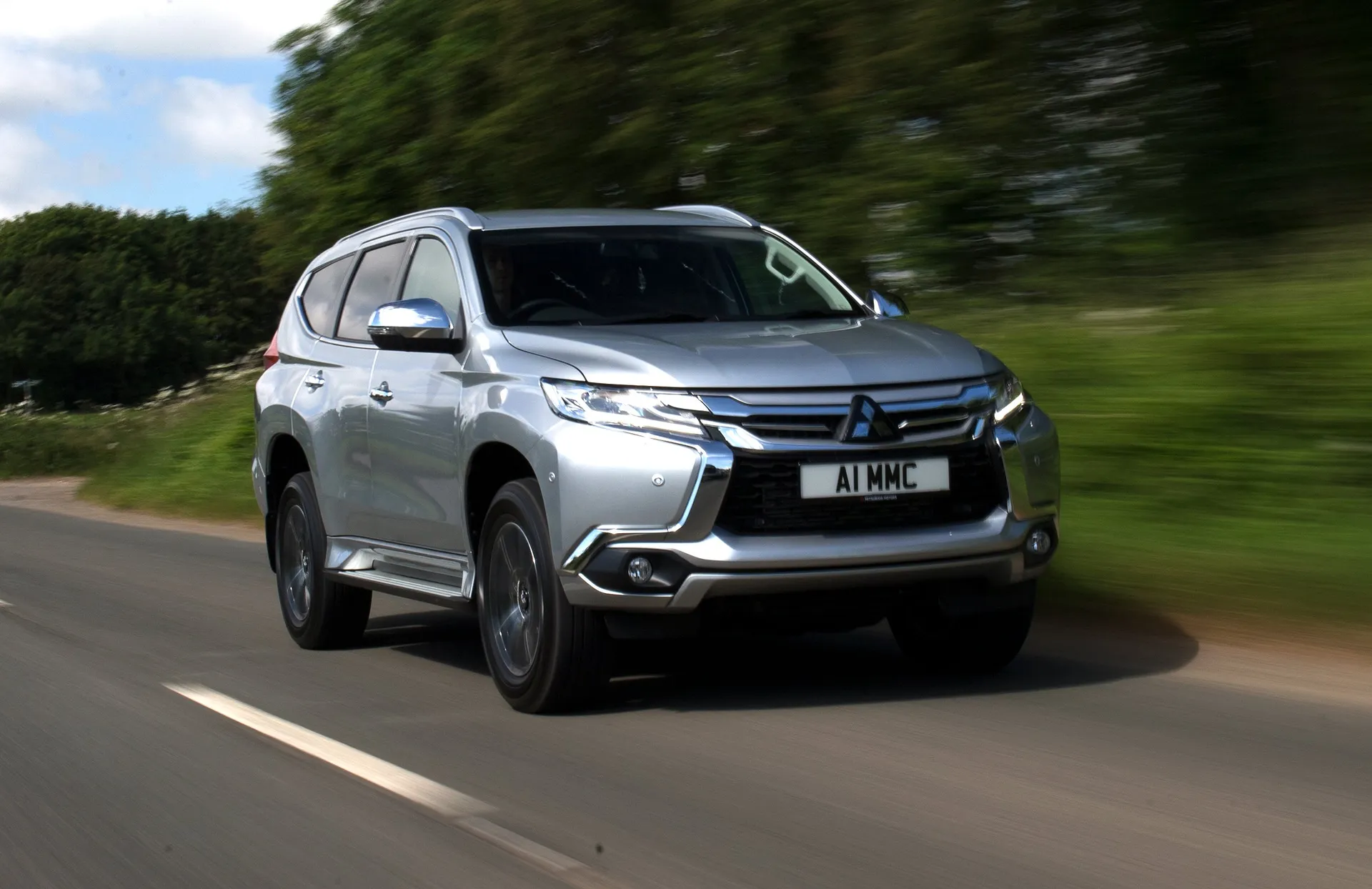
The ride is a bit fussy on poor road surfaces, despite being a bit soft. This softness means that the Mitsubishi Shogun Sport rolls more than is preferable when you take a corner at any sort of speed. It’s fine at lower speeds, but the vague steering doesn’t help inspire vast amounts of confidence either. The other downside of the soft suspension is a tendency to pitch forwards and backwards under heavy braking or acceleration.
Off-road things are a totally different matter, as this is where the Mitsubishi Shogun Sport comes into its element. All models have a wide range of kit that let you get into places that many others wouldn’t get close to. It comes with permanent four-wheel drive and four different terrain settings that means you should be able to deal with muddy, steep, gravelly, icy or wet surfaces easily. The fact that you can switch into these different modes just by twisting a dial means it is accessible and easy to understand too.
Beyond this, the ability to switch between low and normal ratio gearboxes, the hill descent control and the locking rear differential all help you get through and out of all manner of tricky spots.
If you are going to be spending more time off road, then the Mitsubishi Shogun Sport is a really strong performer but it is a shame that it can’t back this up on road.
What engines and gearboxes are available in the Mitsubishi Shogun Sport?
There is just the one engine in the Mitsubishi Shogun Sport and it, like many other elements, is shared with the Mitsubishi L200. However, the 2.4-litre isn’t the most modern of units, as the L200’s 2019 update brought it a new 2.2-litre.
The Mitsubishi Shogun Sport’s engine comes with 181PS, but offers a hefty 430Nm of torque. The latter is more important to a vehicle like this and it means that you can load up the Mitsubishi with loads of kit and tow an impressive amount too – it has a maximum braked towing capacity of 3.1 tonnes.
This engine makes it one of the slowest SUVs out there, with 0-62mph coming in 11.0 seconds, but it does feel a little brisker than that at lower speeds so accelerating to get up to speed on the motorway and to pull off an overtake isn’t too daunting.
There is just the one gearbox, too, with an eight-speed automatic the only option. This is a smooth-shifting ‘box, although it can sometimes hold onto a gear a little longer than seems natural. It does come with paddle shifters, though, so if you ever feel like it is revving more than you would like then you can always encourage it to shift up. With eight ratios there is a high chance you’ll have a spare gear to hand too.
Refinement and noise levels
The 2.4-litre engine is not a quiet one, and it’s apparent that it is something more suited to a commercial vehicle. SUV buyers might hope for a quieter experience, though it makes its presence known at tick-over and on the move. It sounds quite agricultural, especially if you ask for an urgent burst of acceleration, although it does settle down once you get up to a cruising speed.
The engine isn’t the only source of noise, though, with wind and road noise both making their way into the cabin – the former is especially apparent when you get up to motorway speeds, while the big tyres kick up a fair bit of a roar too.
However, it isn’t as raucous an experience as the Mitsubishi L200. Mitsubishi worked on the body mounts and the upgrade suspension means that there is less vibration on the whole.
Safety equipment: How safe is the Mitsubishi Shogun Sport?
There is no official crash test for the Mitsubishi Shogun Sport, although the Mitsubishi L200 on which it is based fared fairly well, scoring four stars in 2015. Although the tests have got stricter since then, the Mitsubishi Shogun Sport also has more safety equipment than its pick-up sibling.
This equipment includes hill-start assist, active stability and traction control, rear parking sensors and brake assist. In a nod to its likely use, it comes with a trailer assist system, too, which detects when a trailer is starting to sway and controls individual wheels to bring it back in line. It will also flash the brake lights to warn any following drivers.
In addition to the standard kit, the 4 model gets more safety gear, like blind spot warning, a forward collision mitigation system, adaptive cruise control, front parking sensors and a 360-degree camera. The latter is handy for parking in town but also useful for picking your way through tricky terrain and spotting rocks or holes on the ground.
Given the lack of high-tech entertainment features on the Mitsubishi Shogun Sport, the extra safety kit is the main reason to pick the higher trim. There aren’t any additional features on the options list either.
MPG and fuel costs: What does a Mitsubishi Shogun Sport cost to run?
"Fuel economy on the Mitsubishi Shogun Sport is pretty poor at 32.8mpg, which is a fair way behind more road-biased vehicles like the Hyundai Santa Fe and Skoda Kodiaq – the 4x4 version of the latter manages close to 50mpg."
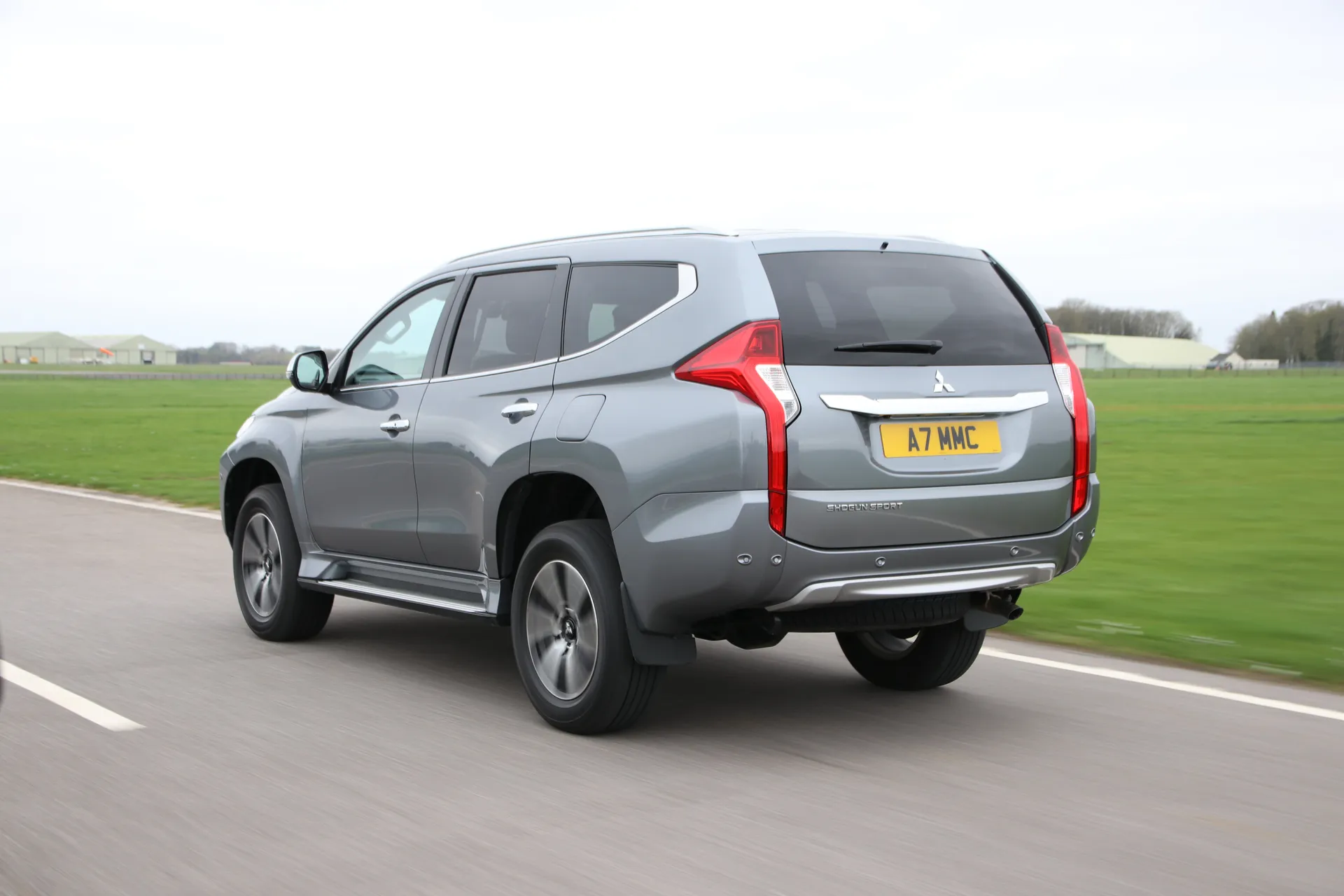
The Mitsubishi Shogun Sport does have permanent four-wheel drive, and is a relatively heavy vehicle, but this is poor nonetheless. Spend time chugging around in sticky surfaces and this is likely to get worse, too.
How reliable is a Mitsubishi Shogun Sport?
The Mitsubishi Shogun Sport scored a mediocre 9.00 out of 10 for reliability in the HonestJohn.co.uk Satisfaction Index - coincidentally the exact same score achieved by its L200 stablemate. Hardy mechanicals mean it should be a tough old beast, but there are more reliable alternatives.
As a brand Mitsubishi finished a rather more impressive 11th place out of 30 manufacturers.
Insurance groups and costs
Despite having the same engine and gearbox, the two models of Mitsubishi Shogun Sport sit in different insurance groups.
The 3 is in group 43 while the higher-spec, more expensive 4 is actually the cheaper of the two to insure, sitting in group 38. This is down to the increased levels of safety kit. This puts the Mitsubishi Shogun Sport on a similar level to the Hyundai Santa Fe, but the Skoda Kodiaq is significantly cheaper to cover.
VED car tax: What is the annual road tax on a Mitsubishi Shogun Sport?
The Mitsubishi Shogun Sport is about as expensive as it can get to tax. It was launched after the pure CO2-based taxation system kicked in, but it sits in the second-to-top bracket for the showroom tax, which will add a hefty chunk to the first-year costs. Thankfully it is just below the £40,000 price point so doesn’t qualify for the extra VED bills in the first five years of its life.
How much should you be paying for a used Mitsubishi Shogun Sport?
"The Mitsubishi Shogun Sport wasn't on sale for very long, so there isn’t a vast amount of history to look at when it comes to sold values."
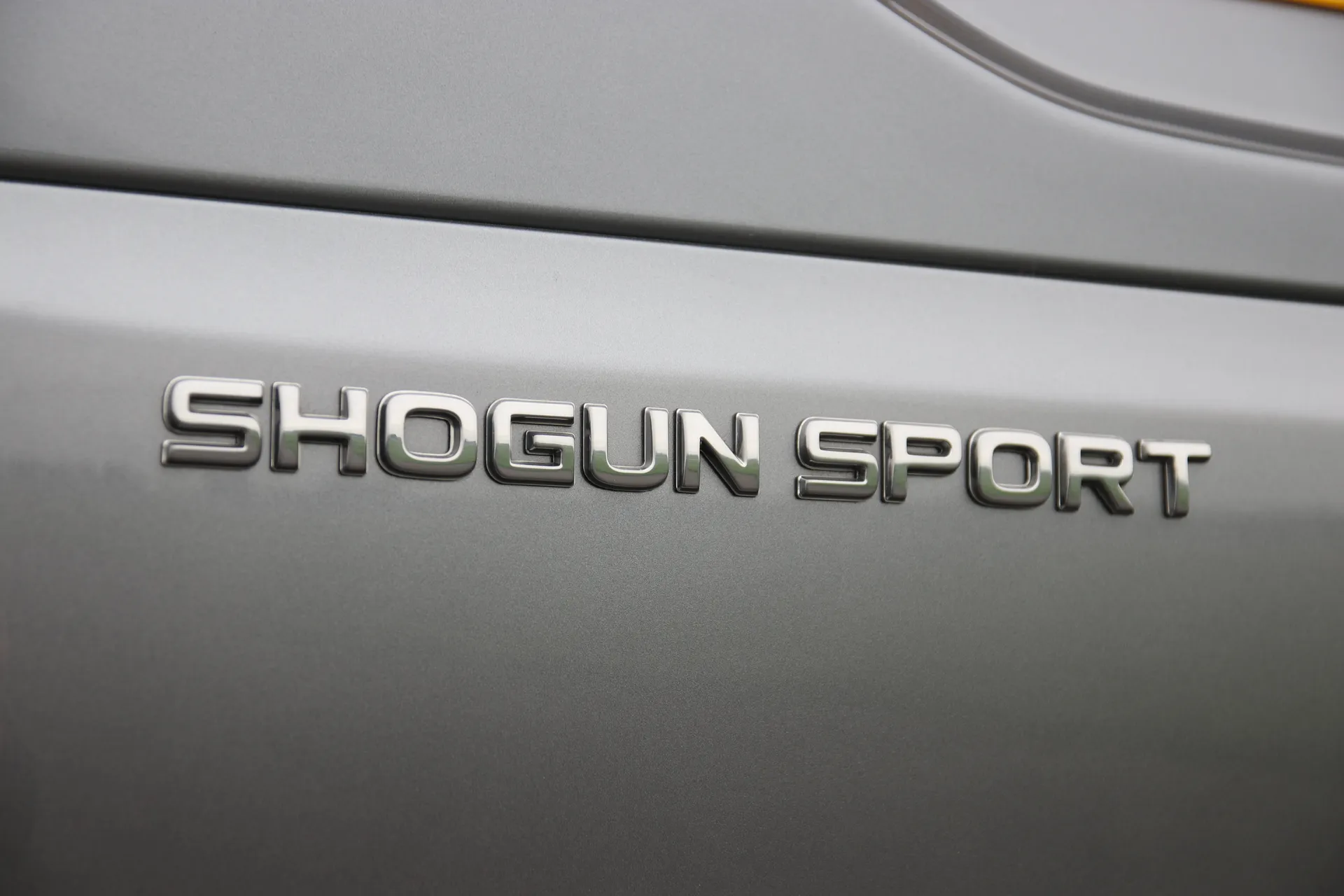
We found a handful for sale in the HeyCar classifieds, starting at £25,000 for a 2019 car in 4 spec with 35,000 miles. Even a very late 2021 car with just 9,000 miles on the clock in 3 spec was only another £4,000, so it pays to be patient and look for the best value example.
Trim levels and standard equipment
There is little choosing to do when it comes to the Mitsubishi Shogun Sport range, with just the two trims available and only the one engine and gearbox.
The Mitsubishi Shogun Sport 3 comes well-enough equipped that there seems little point stepping up to the Mitsubishi Shogun Sport 4, especially as most of the extra kit is aimed at on-road use. There was only the one option, and that was the paint, so that comes purely down to personal taste.
Ask the heycar experts: common questions
Are Mitsubishi Shoguns reliable?
What is the Mitsubishi Shogun Sport?
Is the Mitsubishi Shogun Sport the same as the Mitsubishi L200?
Get our latest advice, news and offers
Keep me updated by email with the latest advice, news and offers from heycar.
By submitting you agree to our privacy policy
